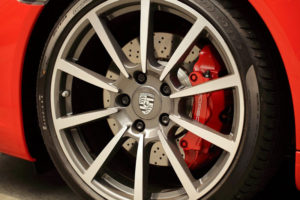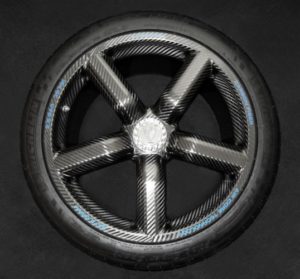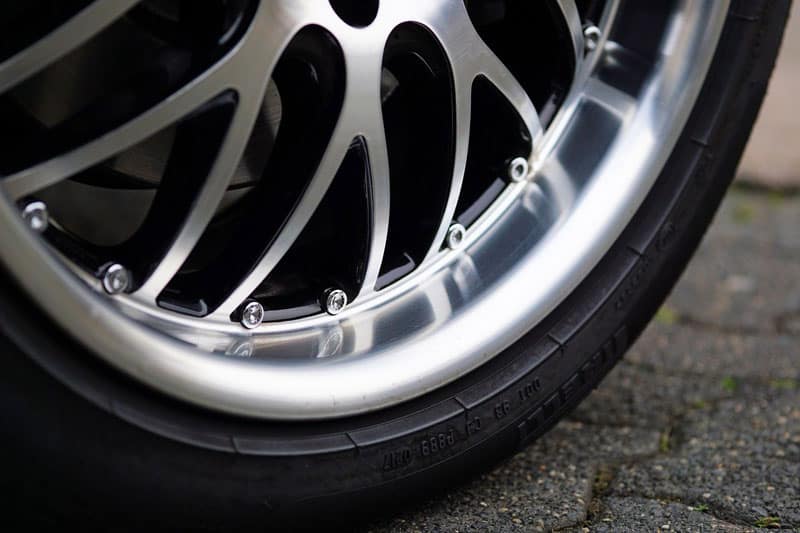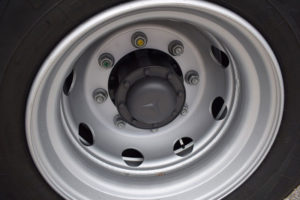Table of Contents
What Are The Differences Between Rims? Which Type Is The Best?
Rims can be a hot topic for car and truck enthusiasts. Some people think big rims look ugly on a car while others replace their stock wheels with new rims whenever they buy a new car. Whether you call them rims or wheels they are essentially the same thing.
Ultimately the type of rims that you decide to go with will be dependent on which type you find appealing and how much you are willing to spend. If you are looking for a new set of rims or just want to learn more about the rims on your car then keep reading.
Which Type of Rim Is Best?
The main consideration to make when choosing which rims are right for your car is your budget. Do you want to spend just a few hundred dollars or thousands for your rims? The second consideration to make when choosing rims is how heavy they are. Carbon Fiber rims are the lightest followed by forged, alloy, and then steel.
The heavier your wheels are the more unsprung weight your car or truck will have which will affect your braking, acceleration, and handling. A lighter rim will allow your car to accelerate faster and will allow your brakes to bring your car to a stop in shorter distances. That’s also why alloy and forged rims have been favored more than steel rims because the aluminum alloy is lighter than steel.
Steel Rims
If you are looking for the cheapest and most durable rim type then look no further. Steel rims will cost less than the other rim types but will be much heavier than the other rim types on this list, which is their main disadvantage.
Steel rims used to be the most common type of wheel used on cars but recently manufacturers have favored using other wheel types because of the aesthetics of alloy and chrome. Most steel rims will be painted black or powder coated to preserve the steel finish.
If the steel rims were not painted they would be susceptible to rust which is also an advantage for alloy wheels as aluminum will not rust. Steel wheels will more resistant to damage than comparable alloy wheels as well because of the toughness of steel.
Nowadays you will likely only see steel wheels used on heavy-duty trucks and semis because of the durability of steel and the heavy loads that they have to tow on a daily basis.
Alloy Rims

The best bang for your buck when it comes to rims is alloy rims. Alloy rims are lighter than steel rims but will also cost less than chrome or forged rims. Alloy rims are the most common type of wheel used on cars made today because they are lightweight and can come in a variety of finishes like chrome, polished, or machined.
The main disadvantage of alloy rims is their durability. Because alloy rims are made of a mix of aluminum and nickel they will be more susceptible to bending and cracking than comparable steel rims. This is because steel is a harder metal than aluminum or nickel.
However, alloy rims will allow your car to perform better than steel rims because of the reduced unsprung weight. Alloy rims will cost more than comparable steel rims but will typically cost less than forged or cast wheels.
Forged Vs Cast Rims

While searching for new rims for your car you may see the terms forged and cast. These terms refer to the way that the rims were made. Forged wheels are made by superheating metal to increase the strength of the metal and then are machined or milled into their final shape.
Forged wheels will be much stronger than steel or alloy wheels because the wheels are superheated to increase their strength. However, forged rims will also cost more than comparable steel or alloy wheels.
You will typically see 1-piece, 2-piece, or even 3-piece forged wheels for sale. The number of pieces is just an indication of how many pieces of metal were used to make the wheels.
With cast wheels, molten metal (usually aluminum, nickel, and titanium alloys) are poured or forced into a mold. When the molten metal cools down it can then be removed from the wheel cast and the final steps (paint or polish) can be taken to prepare it for sale.
Cast wheels will not be as strong as forged wheels because the metal is not superheated and hardened, but cast wheels will cost less than forged wheels because there is less preparation involved.
Chrome Rims

While chrome rims are a type of rim really chrome is just a finish applied to rims. In reality, a chrome finish can be applied to steel, alloy, or forged rims. Applying a chrome finish to your rims can be expensive which is why most cars today come with painted or powder coated rims.
If you are looking to purchase a set of chrome rims for your car or truck you should know that chrome will need extra care when compared with painted or powder coated rims. Chrome rims are susceptible to oxidation and will have their finish fade with time if not properly cared for.
Carbon Fiber Rims

While carbon fiber rims will be out of reach for the vast majority of people they are still a type of rim that is used today. Carbon fiber rims are the lightest type of rims that you can currently purchase but will also be the most costly.
Carbon fiber rims will be out of the price range for most people looking to upgrade their rims. This is because carbon fiber rims are the latest wheel technology and still cost a lot to manufacture. You can expect to pay upwards of a few thousand per rim for carbon fiber rims for your car.
The most notable car that I can think of which uses carbon fiber rims is the Ford Mustang GT 350R. It comes from the factory with carbon fiber rims which allows it to accelerate faster and brake faster than a comparable Mustang GT 350 with aluminum alloy wheels.
Car and Driver says that the carbon fiber rims shave 58 pounds of unsprung weight off of the car when compared to the Mustang GT 350.
Carbon fiber rims are made from pieces of carbon fiber that are stacked on top of each other with a resin that is then injected into a wheel mold. It is then pressurized and put in an oven to bake the wheels and create the carbon fiber wheel.
Final preparations are then made to cut out the valve stem hole and lug nut holes, the wheels are then put back into an oven to cure again and then will typically be clear coated to preserve their finish.
Spinner Rims
A trend that started in the early 2000s that has recently been on the decline is spinner rims. Spinner rims have an outer face that is designed to keep spinning when your car has been brought to a stop. Floater rims have an outer face that is designed to remain stationary or “float” when your rims are spinning giving the illusion that your rims aren’t spinning at all.
Before you go out and spend a ton of money on spinner rims you should check to make sure that they are legal in your local area. In some states like New York, they have been banned because they can pose a safety risk if they become detached and hit a bystander.
Related Questions
What Is A Rim? A rim is the round metal part of your wheels that is what your rubber tires are mounted on. The purpose of a rim is to allow the rubber tire to mount onto the surface of the rim to keep the air inside of the tire.
If you have a crack in your rim this will allow the air from within your tires to escape which is the opposite of what you want. A crack in a rim is tough to repair and may render the rim useless depending on where the crack occurred.
Which is better steel or aluminum rims? When it comes to the debate of steel vs aluminum rims it really comes down to how you plan to use them. If you want better overall handling, acceleration, and braking performance then aluminum or alloy rims would be your best bet.
If you want the ultimate durability and don’t really care about the performance of your vehicle then you should go with steel rims. Steel rims will be more crack and bend resistant than aluminum rims but will weigh more. If you have a heavy-duty pickup truck and plan to tow a lot your best bet would be steel rims.
What is Unsprung Weight? Not all weight on your car is created equal. There are two types of weight when it comes to a car sprung weight and unsprung weight. Sprung weight is any weight that is supported by the suspension of your car which includes the body panels, engine, doors, etc.
The second type of weight in a car is unsprung weight which is the weight of the components that are not supported by the suspension. This would include your rims, tires, brake rotors, brake calipers, wheel hubs, etc.
Any unsprung weight that can be reduced will allow your car to perform better in all aspects. This is why many supercar manufacturers have started using carbon fiber rims as they are the lightest type of wheel that is commercially available right now.


